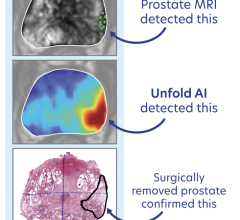
Serving the city of Loveland, Colo., and its surrounding region, the McKee Medical Center brings together advanced medical technologies and extraordinary patient care.
The Cancer Center at Banner Health McKee Medical Center in Loveland, Colo., boasts an array of state-of-the-art technologies and well-qualified staff, but at the core of its mission is the northern Colorado community it serves. “The community is significant, as many local funds were raised for the cancer center, which definitely makes it a community center,” said McKee Cancer Center Director Cindy McBlair, MHA, (R)(T).
The center opened in August 2002, bringing quality care to cancer patients in the city of Loveland and the surrounding region. The ability for patients to come to a local setting and still receive the same high-quality level of radiation treatments as those in more urban areas is important, said Elizabeth Ceilley, M.D., medical director of radiation oncology at McKee Medical Center.
“No matter how complex their individual tumor or clinical situation is, between the experience of our doctors and staff, and our excellent equipment, we are capable of handling any type of cancer treatment,” Ceilley said.
An Arsenal of Latest Technologies
The Cancer Center at McKee Medical Center underwent a nearly $10 million expansion project in 2012 that added spaces for physician offices, conference areas, community support services and a vault for two new technologies, the Philips Brilliance Big Bore computed tomography (CT) system and Varian’s TrueBeam STx linear accelerator (linac). Together with the Clinac 2100 EX (also from Varian), the TrueBeam STx brings McKee Cancer Center’s linac count up to two.
The TrueBeam STx has now been in clinical use for image-guided radiation therapy (IGRT) and radiosurgery for more than a year, according to Bradley Schuller, Ph.D., medical physicist at McKee Cancer Center. It includes upgrades for the HD Millennium 120 multileaf collimator (MLC), which allows for precise stereotactic delivery. Coupled with the TrueBeam STx is a Vision RT system that allows for visualization of a patient’s 3-D surface anatomy. “This helps us monitor the patient during treatment so we can use it for setup by looking at their skin surface,” said Schuller. “Monitoring the patient positions during treatment is important when you’re dealing with specific factors such as breath holds.”
For the center’s stereotactic body radiation therapy (SBRT) program, the new Brilliance CT Big Bore gives clinicians the ability to acquire 4-D CT scans and track breathing motions on patients. A pulmonary toolkit for oncology enables visualization of multiple lung phases to minimize motion artifacts and improve confidence in clinicians, said Schuller. “If there’s a tumor in the lung and the patient is breathing, we’re dealing with a moving target. That 4-D CT allows us to visualize how the tumor is moving as the patient breathes. It’s allowed us to target those moving tumors with very high accuracy. We can reduce the amount of normal tissue that gets exposed during therapy, and we can really increase the amount of dose we apply to the tumor,” he added.
Additional technologies to complement the center’s linacs include ExacTrac patient positioning systems from Brainlab. The ExacTrac systems are used to set up patients “to submillimeter accuracy and deliver high doses to very small spots usually inoperable in patients,” said Schuller.
For treatment planning the center utilizes the current version of Philips’ Pinnacle treatment planning system, which includes the integrated SmartArc module. “What it does is it allows us to sculpt radiation dose around tumors and minimize the dose that hits surrounding normal tissue as much as possible,” explained Schuller. “It also allows us to improve efficiency so treatments can be delivered in a much quicker fashion compared to conventional intensity-modulated radiation therapy (IMRT).”
Ceilley said the offering of such technologies in Loveland means patients in northern Colorado no longer have to travel an hour a day or more multiple times when undergoing a course of treatment that may last up to eight weeks. “We’re making treatment more convenient for patients with the same good outcomes, if not better,” she said. “For example, the typical radiation therapy course for prostate cancer is 44 treatments for almost 9 weeks. With our new technologies, we are able to follow a new protocol in which we precisely deliver treatment to the prostate in just five treatments. That really does improve quality of life in those patients. The other thing we can do is allow some patients who previously wouldn’t have been able to be treated, to be treated.”
Complementing Technologies With Comfort
Despite all the state-of-the-art technologies that allow McKee Cancer Center to perform novel treatment delivery when tackling even tougher cases, the staff say that what sets them apart is the hometown feel that comes with the patient experience. “We have real innovation in extraordinary patient care,” explained McBlair. “That’s one of the things that makes us unique — the technology and the people who deliver it.”
The new treatment room at McKee Cancer Center is one example. “When you walk into our treatment room, you have some of the best equipment that you can buy,” said McBlair. “But we felt it could be overwhelming for someone who needed to come in for treatment. We wanted to make sure that we were able to match the patient experience to the technology that was in that room.”
“That room” features a fiber-optic ceiling, backlit in purple-blue to create the illusion of a starry night sky, complete with constellations such as the Big Dipper, Little Dipper and Orion, as well as the Banner Health heart logo and the word “hope.” A flat-screen television set above the patients can be customized with an iPad to show comforting images and videos that could ease the treatment experience. McBlair recalls one Spanish-speaking patient who was able to listen to familiar Latin music during treatment to help decrease anxieties. “We truly take that and the patient experience into as much consideration as possible,” she said.
Decreasing discomfort and anxiety also brings clinical benefits to the radiation therapy. Lower stress levels can increase the body’s immunity levels. And “when patients are more comfortable they tend to hold still better,” added Ceilley. “The stiller our patients are, the more accurate our treatment delivery is.”
Ceilley says the family atmosphere at McKee Cancer Center truly contributes to a patient’s therapy just as much as the high-quality technologies that deliver it. In addition to radiation oncologists, clinical staff and administrative personnel, the center also employs social workers to help patients through the experience, from initial diagnosis through radiation treatment, to follow-up visits and “graduation.” A library is also on site, complete with resource materials for patients, as well as community meeting spaces and a garden outside the chemotherapy area. “This really is the first time in the region where all of these services are available under one roof,” said Paul Matthews, public relations director for McKee Medical Center.
Seeing Improvements
Since its recent expansion the center has seen the benefits that the latest combined technologies and programs can offer. With on-board imaging available with the TrueBeam STx, there is little lag time between imaging and treatment. Arc-based techniques allow patients to be treated more efficiently and quickly. And while newer technologies often mean higher costs, the center says reducing side effects and requiring fewer medications and/or hospitalizations often translates into savings for patients.
Matthews concluded: “I think that’s a really important service that we offer to the City of Loveland and the surrounding region. It’s the point of offering world-class radiation therapy in the community setting.”




 April 12, 2024
April 12, 2024 








